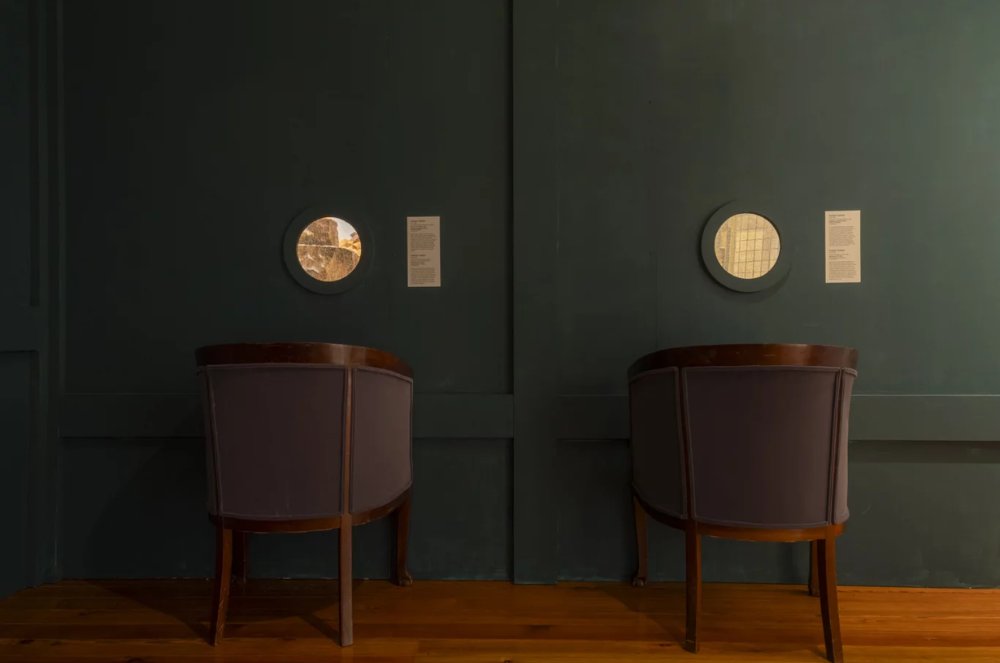The Cosmorama: virtual journeys before virtual reality

From June 28 to September 10, 2025, the Cinemateca Portuguesa – Museu do Cinema in Lisbon hosted the exhibition The Cosmorama – Virtual Travels in the 19th Century, inviting contemporary audiences to rediscover one of the most fascinating and now-forgotten visual experiences of the 19th century: the Cosmorama.
Curated by Victor Flores, Susana S. Martins, and Ana David Mendes, the exhibition was organised by the Early Visual Media Lab (CICANT, Lusófona University) in collaboration with the Institute of Art History (NOVA FCSH). The project stems from the FCT-funded research project Curiositas – Peeping Before Virtual Reality: A Media Archaeology of Immersion Through VR and the Iberian Cosmoramas (2022–2026).
Rediscovering a Forgotten Medium
The Cosmorama was a popular 19th-century attraction that allowed viewers to “travel” the world through optical illusion. Visitors would peer through magnifying lenses to view paintings that created a powerful illusion of depth, offering an immersive visual journey long before the advent of virtual reality.
The exhibition presented both a physical and virtual reconstruction of a historical Cosmorama, alongside a curated selection of 18th- and 19th-century optical devices, such as zograscopes, peep boxes, and stereoscopes. This collection revealed the vibrant culture of lens-based entertainment that shaped early visual media.
A highlight of the exhibition was a reconstructed Cosmorama room displaying works by Austrian painter Hubert Sattler (1817–1904), whose detailed cityscapes captured the spirit of global exploration. Among these was The Mouth of the Tagus near Lisbon (1868), a striking depiction of Lisbon as a cosmopolitan maritime hub.
Peeping, Learning, Travelling
The exhibition contextualised the Cosmorama within a broader history of optical entertainment, showing how these devices blended education, science, and spectacle. From aristocratic zograscopes to itinerant peep shows in public fairs, these early media forms offered “sedentary travels by sight” to audiences fascinated by the wonders of the world.
Virtual Journeys Reimagined
Bridging the past and present, the exhibition’s VR installation recreated Andorfer’s Grand Optical Gallery, a Cosmorama once presented in Lisbon in the 1840s. Visitors explored six themed lenses – Cities, Monuments, Religion, Nature, and more – where artificial intelligence was used to generate immersive depth effects.
A second virtual experience allowed users to navigate a digital map tracing the routes of 19th-century showmen and their exhibitions across the Iberian Peninsula. Based on the analysis of over 700 historical newspaper advertisements, this component revealed the scale and cultural impact of Cosmoramas between 1830 and 1870.
A Journey Beyond the Exhibition
Complementing the exhibition, a series of guided tours and public events explored the cultural and technological legacy of the Cosmorama. On 6 September 2025, the Cinemateca Portuguesa hosted the launch of Cosmorama. The Forgotten Medium, edited by Victor Flores and Susana S. Martins. Published in both Portuguese and English, the book gathers new research on the images, itinerant showmen, and audiences that shaped this captivating chapter in visual history.
- published 14 October 2025
- modified 14 October 2025
